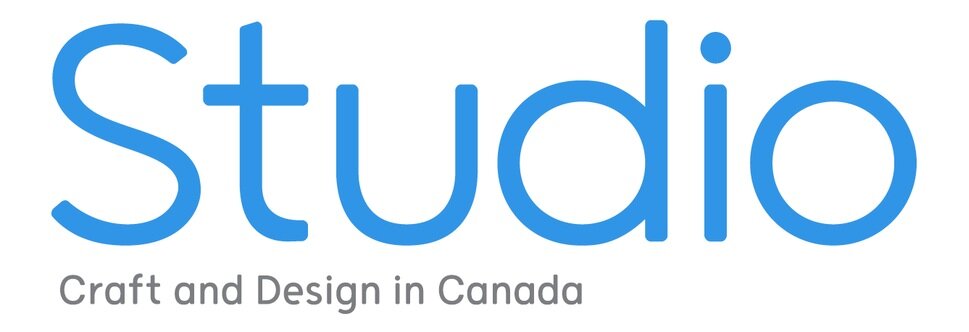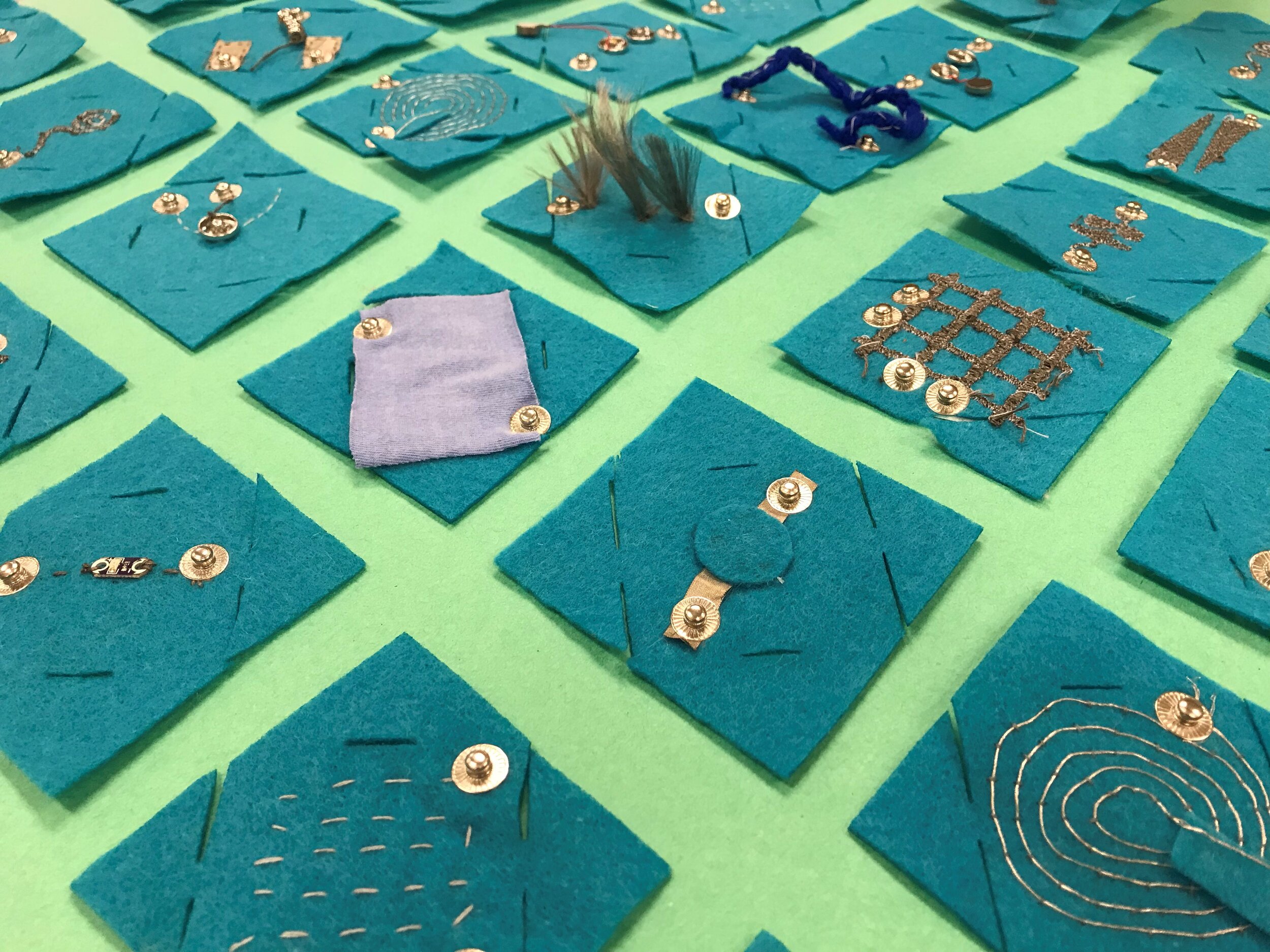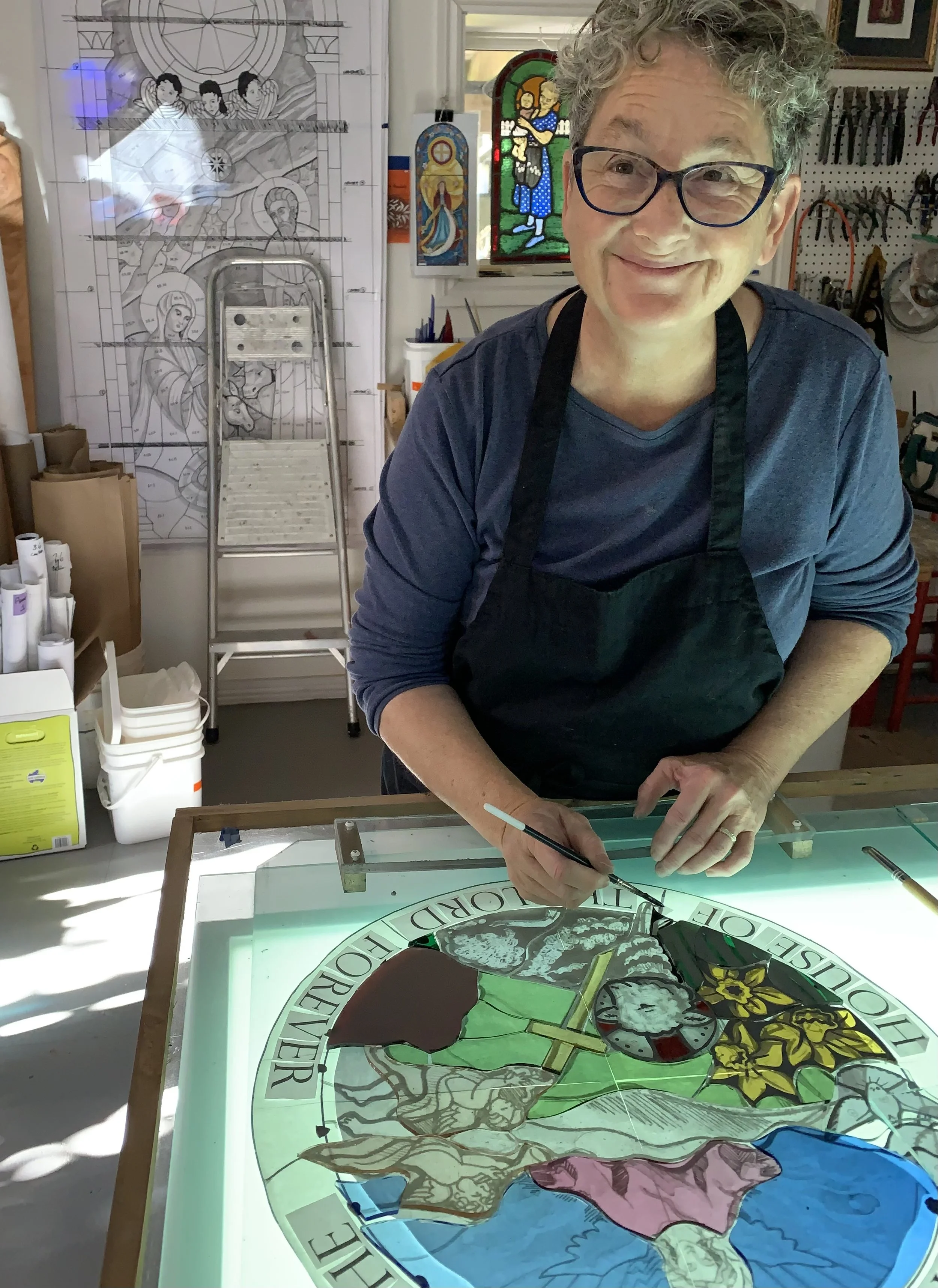Playing With Fuzzy Tech Styles
Lee Jones Punch Sketching E-textiles, 2021. Wood, wool and conductive yarn. COURTESY OF THE ARTIST
Playing, communicating and interacting with electronic textiles unleashes the imagination and invites futuristic engagements with an ancient craft.
Electronic textiles (e-textiles) are interactive textiles with sensing and actuating properties. Imagine textiles that can sense touch, change colour, play music or shift into different shapes, all while remaining soft and flexible. The unique aspect of e-textiles is that these fibers and materials can be combined with textile crafting techniques to make technologies that fit seamlessly into our lives.
Textiles are everywhere: in our clothes, furniture, home and office interiors, and soft objects like toys. Using e-textiles, we can integrate technologies into intimate moments that are inaccessible with current technologies: Technology can be comforting, soft and fuzzy.
Currently, the abilities of e-textiles are the domain of experts, and require interdisciplinary knowledge of computation, electronics and textile design. As a result, these technologies are often leveraged for engineering opportunities such as biometric tracking, rather than for many of the reasons that we wear clothing or use textiles: specific situations and contexts, self-expression or comfort.
Designing smart textiles will need to be accessible to a wider audience including fashion and textile designers, craft practitioners, hobby sewists and makers. In my research and outreach, I make smart textiles accessible to individuals who want to leverage their creativity and customization opportunities.
The history of e-textile materials is long. Conductive gold and silver threads have been used in fine crafts for embellishing textiles for hundreds of years, but when combined with smaller, flexible computers they expand what textile crafts are capable of. There are a wide variety of textile handcrafts such as spinning, felting, crochet, knitting and weaving that when mixed with e-textiles create materials that are aesthetically expressive and functionally interactive.
Imagine materials that can respond to touch, change colour with their environment or respond to our needs by providing back massages or warmth.
Interactive textiles might sound like science fiction, but at the Creative Interactions Lab at Carleton University I have been exploring how artists and crafters can use e-textiles for their expressive and creative potentials. I have been running workshops in makerspaces and art galleries where we discuss what participants want future craft practices to look like for these new materials.
Lee Jones Wearable Crazy Eights Sketch, 2021 COURTESY OF THE ARTIST
These workshops start with ideation to help participants imagine future situations where they would want to use e-textiles.
I have developed a method called Wearable Crazy Eights [1] that uses both time pressure and random inputs to help participants think creatively without self-criticism. The method starts with participants dividing a piece of paper into eight squares, and for each square they grab a random card set from each of three piles and sketch an idea. Pile one has cards with different e-textile garments (such as a shirt, skirt, or cape), pile two has different situations and contexts (such as pregnancy, in the studio, while sleeping), and pile three has different adverbs to describe the interaction (such as slowly, surprisingly, regularly). Participants then have eight minutes to come up with eight different concepts. The time pressure keeps participants from overthinking their ideas and instead come up with whimsical concepts, such as a skirt that swishes and makes music with movement.
Next, participants explore e-textile samples and materials using Swatch-Bits [2] [3], a toolkit of e-textiles swatches. Swatch books are a common feature of the textile industry and contain samples of different materials for future reference. With Swatch-Bits, each interactive swatch is also a component, such as a soft speaker, fuzzy stroke sensor, stretch sensor or textile button, and the design of the swatch enables it to interlock with other swatches to become a textile of any shape or size. Using these swatches, participants can explore what different e-textiles components feel and look like, while combining them to make a prototype.
Lee Jones Swatch Bits Laid Out, 2020. Tessellated laser-cut file, metal snaps, conductive yarn, felt. COURTESY OF THE ARTIST
The artists in the workshops often used the materiality of the swatches to inform their e-textile concepts. For example, one group developed a concept for a 1920s flapper dress where the entire fringe of the dress was made out of fuzzy stroke sensors that would recognize dance movements. These are concepts that can only come from taking an artist and craft perspective rather than the current engineering perspective common in most e-textile research labs.
Since the pandemic has led to pausing in-person workshops, I have been interviewing fiber artists to better understand how to integrate craft practices with e-textile toolkits. A recent project, Punch-Sketching E-textiles [4], explored how we could integrate the tools and techniques that punch needle fiber artists use in their work with the unique needs of building an interactive circuit.
The punch needle has been used traditionally for developing fuzzy rugs and builds off of the rug hooking fiber art technique. The punch needle is a unique fiber art tool because it enables one to “draw” or “sketch” their envisioned piece, similar to how one might paint or pencil an image. Practitioners can begin in any location, move in any direction, and the tension of the fabric holds the looping stitches in place. The fiber artists I interviewed also emphasized how the technique allows for re-use. The stitches stay in place, but when pulled on the underside from a specific angle, can be pulled out and used again.
When adapted for e-textile crafts, the punch needle allows an e-textile crafter to punch out their circuit to try out a concept and then pull it out easily to fix errors or re-use. By taking this craft approach, we can leverage old techniques in new ways to design future soft technologies.
Lee Jones E-Darning Sampler, 2021. Darning loom, weft pick and darning mushroom. COURTESY OF THE ARTIST
Like many textile practitioners, sustainability is increasingly an ethical concern. In designing future soft technologies, we don’t want to add to the already vast amounts of textile waste. Punch-sketching e-textiles enables re-use of threads, but to further this research I have interviewed visible mending educators on how they teach visible mending and sustainable making practices. Visible mending is a craft technique and an active mend where the textile is added to and transformed through decorative stitching; the textile is not only mended, but also improved.
The visible mending educators I interviewed discussed the importance of tangible learning and students touching examples that show the steps of building each stitching pattern. To do so, the educators make swatches in various stages of repair and mends demonstrating the different mending approaches. Many educators had “mending museums” — jeans, sweaters, and other textile items with many repairs showing various mending locations and techniques.
To transform darning, a mend where individuals make a small woven patch, for e-textile crafters I developed the E-darning Sampler [5], which shows how we can use mending tools like darning looms and mushrooms, to integrate new functionalities into the textiles we already own. Initial examples include mends that sense when they are stretched, mends that can power other electronics and mends that can sense touch. By using the education techniques that visible mending educators already use and adapting them to e-textiles, we can encourage more sustainable making and crafting practices.
The tools and toolkits I have developed augment textile current crafting practices with interactive potentials by working with and learning from fiber artists and practitioners. In the future, anyone will be able to craft their own soft technologies to suit their own needs, but in designing these technologies and toolkits we need to consider the history and practices of textile crafts.
[1] Jones, Lee, Sara Nabil, and Audrey Girouard. “Wearable Crazy Eights: Wearable Ideation Methods for Encouraging Divergent Design Concepts”. In Fifteenth International Conference on Tangible, Embedded, and Embodied Interaction (TEI ’21), February 14–17, 2021, Salzburg, Austria. ACM, New York, NY, USA, 6 pages. https://doi.org/10.1145/3430524.3442464
[2] Jones, Lee, Sara Nabil, and Audrey Girouard. "Swatch-bits: Prototyping E-textiles with Modular Swatches." In Proceedings of the Fourteenth International Conference on Tangible, Embedded, and Embodied Interaction, pp. 893-897. 2020. https://doi.org/10.1145/3374920.3374971
[3] Jones, Lee, Sara Nabil, Amanda McLeod, and Audrey Girouard. "Wearable Bits: scaffolding creativity with a prototyping toolkit for wearable e-textiles." In Proceedings of the Fourteenth International Conference on Tangible, Embedded, and Embodied Interaction, pp. 165-177. 2020. https://doi.org/10.1145/3374920.3374954
[4] Jones, Lee, Miriam Sturdee, Sara Nabil, and Audrey Girouard. “Punch-Sketching E-textiles: Exploring Punch Needle as a Technique for Sustainable, Accessible, and Interactive Physical Prototyping with E-textiles”. In Fifteenth International Conference on Tangible, Embedded, and Embodied Interaction (TEI ’21), February 14–17, 2021, Salzburg, Austria. ACM, New York, NY, USA,12 pages. https://doi.org/10.1145/3430524.3440640
[5] Jones, Lee. “The E-darning Sampler: Explore E-textile Repair with Darning Looms”. In Fifteenth International Conference on Tangible, Embedded, and Embodied Interaction (TEI ’21), February 14–17, 2021, Salzburg, Austria. ACM, New York, NY, USA, 5 pages. https://doi.org/10.1145/3430524.3444700
This article was published in the Spring/Summer 2021 issue of Studio Magazine.










